
The history of how the Dormition of the Theotokos became one of the Major Feasts of the Orthodox Church calendar year is an interesting one. Historically, fascination with and reverence for Mary as Theotokos grew as the theologians of the Church reflected on and marveled at the divinity of Christ. The incarnation of God (which is the salvation of humanity!) is only possible through the Theotokos. As the centuries passed, the Church emphasis on Christ’s divinity increased and His humanity was subsumed into His divinity, Christ became revered ever more as the eternal pantocrator. The focus on Jesus became of Him as Lord, God and Savior, a heavenly person. Mary too became more drawn into heaven as its queen. As a consequence, Mary’s place in the Church grew and she became larger than life and took a unique place in the divine pantheon – More honorable than the Cherubim and beyond compare more glorious than the Seraphim. As the Dionysian celestial hierarchy became the common cosmology, Mary’s role as beyond that celestial hierarchy grew. The effect on piety was that less and less could the theologians countenance that Mary’s death could have been an obscure and unrecorded event. They assumed in later centuries the fact that there was no tomb with a body meant that something miraculous must have happened to her body. It didn’t seem possible that such a great personage, an almost divine figure for them, could have been ignored by earlier generations. So they were ready to accept stories of her miraculous death as being true. The appearance of the Dionysian corpus in the 6th Century was the welcomed proof of the earliest origins of the Feast of the Dormition.
We learn a great deal about the history of the Feast of the Dormition in the book ON THE DORMITION OF MARY: EARLY PATRISTIC HOMILIES.
The story of Mary’s glorious end, which was to become common coin by the end of the 6th Century, appears in a variety of earlier forms that are difficult to date with certainty. Most scholars agree that the oldest extant witness to the story is provided by a group of Syriac fragments … a narrative usually dated to the second half of the fifth Century. The earliest Greek accounts… usually dated to the late fifth or early sixth century.” (p 7)
By the second half of the sixth Century, it is clear that the story of Mary’s transition from earth to heaven had come to be accepted as part of Christian tradition in both the Chalcedonian and the non-Chalcedonian Churches of the East.” (p 9)
The oldest known accounts of the Dormition come only from the second half of the Fifth Century (after 450AD). This means many of the great Patristic writers of the 4th-5th Century would not have known of the story, which is why they don’t mention it. Liturgically celebrating the stories of Mary’s death gain popularity rather late in Orthodox history becoming common in the Fifth and Sixth centuries. The story of the Dormition seemed to be a crowning proof of the incarnation, resurrection and salvation of humanity which was understood as union with God. There was some resistance to the rising popularity of the Dormition Feast as the Church was aware that most of the information about her death came from spurious sources that were not only non-canonical but in some cases suspected as heretical.

The Western Church did not accept the feast into its calendar until the end of the seventh century, and a Latin version of the narrative of the Mary’s Dormition had been listed among the apocrypha of heretical origin in the Decretum Gelasianum, an official list of canonical and uncanonical works composed either during or shortly after the time of Pope Gelasius 9 (492-496). (p 68)
As early as Origen (d. 253AD), however, Christian scholars were aware of the mythical and often Gnostic character of many of the acts of the apostles. (p 68)
For a conservative church that prided itself on keeping tradition, explanations had to be found for why earlier generations did not know of or keep the Feast of the Dormtion. Fourth Century Epiphanius of Salamis notes:
“one will find neither the death of Mary, nor whether she died or did not die, nor whether she was buried or was not buried … Scripture is silent, because of the exceeding greatness of the Mystery, so as not to overpower people’s minds with wonder.” (p 5)
Epiphanius is struck by the complete lack of reliable witness to what happened to Mary at the end of her life. Absolutely nothing is recorded in the official tradition which he knew in the 4th Century. He will make an argument from silence about what it means: the mystery of her death is so great that people piously avoided writing about it as the faithful were not prepared to contemplate the mystery. This explanation lends itself to then focusing on the miraculous elements of the story: the ancients were silent because of the great mystery, so the preachers decided to elucidate the greatness of the mystery so the faithful would understand why earlier generations didn’t even speak about it. This was all compounded by the rhetorical tendency of the preachers to elaborate the theme and find new and greater ways to praise the mystery. That is obvious throughout the book’s collection of sermons on the Dormition – each preacher wants to outdo all the previous ones in praising the amazing events, and so they embellish the praise, taking it to ever greater rhetorical heights.
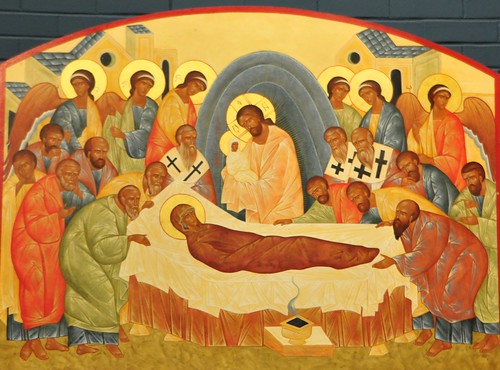
John of Thessalonica (d. 649AD) puzzles over why the great Orthodox city of Thessalonica was only in his day (7th Century) beginning to celebrate the Dormition which he mistakenly believes was an event known in Christian antiquity.
“… some people committed to writing the wonderful things that happened in her regard at that time. Practically every place under heaven celebrates every year the memory of her going to her rest, with the exception of only a few, including the region around this divinely protected city of Thessalonica. Why is this? … Our forebears, then, were neither heedless nor lazy; yet although those who were present then [at Mary’s death] described her end truthfully, we are told, mischievous heretics later corrupted their accounts by adding words of their own, and for this reason our ancestors distanced themselves from these accounts as not in accord with the catholic Church. For this reason, the feast [of her Dormition] passed, among them, into oblivion.” (p 47-48)
John has already come to accept as tradition that the stories of Mary’s Dormition were written about the time they actually happened. He assumes the stories of her Dormition are historically accurate and reliable. He either has heard or assumes that virtually all other cities in the Empire celebrate the Dormition except a very few and his own city is one that does not. He doesn’t conclude that Thessalonica is thus keeping and defending the more ancient tradition, rather he has a very pious explanation – their city forefathers were aware that heretics had altered the stories of the Dormition and to protect the city from false teachings had decided to stop commemorating the Dormition. Apparently he thought in his day they now had the true version of the Dormition story so they could celebrate the feast.
Whereas earlier generations of Christians shied away from the Dormition stories because they saw them coming from heretical, Gnostic or suspect sources, John thinks the sources are true but later generations of heretics altered them and so by going back to the sources they are embracing the correct tradition. It is a wonderful twist of logic.
Orthodox scholar Carrie Frederick Frost says that today, “The tales included in the Book of James are not considered by Orthodox to be historical and incontrovertible fact, but instead are understood as meaningful reflections on the life of Jesus and his mother.” (MATERNAL BODY, p 7)

St Andrew of Crete (d. ca 726AD) writing even later in history is still struggling with why the Dormition which by his day was a well established Feast throughout Orthodoxy is not found in the canonical scriptures or in the witness of many of the great Fathers of the Church. It does strike him as unbelievable that the apostles and eyewitnesses of Christ didn’t write about such a great event as the Dormition.
“Someone truly eager for knowledge might well wonder why none of the sacred writers, as far as we know, wrote about the immaculate, supernatural passing of the Mother of God, or left us any account of it at all, in the way they composed the divine book of the Gospels or gave us other revelations of the mystery of God.
Truly for Andrew it is hard to believe no one in the ancient church bothered to record the spectacular events of the Dormition. He will offer several possible explanations as to why this might be true, but he doesn’t commit himself to any of them. Because the Feast has become so popular, he doesn’t even entertain the idea that maybe the ancients didn’t keep the Feast because they in fact didn’t know about it. But he knows there are some serious questions about the veracity of the events being celebrated. His mental dissonance is relieved by several different possible explanations, but then he has an ace card in the end which assures him of the truthfulness of the Feast.
Our answer is: she whom God took as his own fell asleep much later [then the events of the Gospels] – for it is said that she had reached extreme old age when she departed from this world. Or perhaps the times may not then have favored a full account of these events; it was not appropriate for those sowing the seed of the news of God’s saving plan to speak in detail of these things, at the same time they were writing the Gospels, since these events needed another, specific and very deliberate kind of treatment, not possible at that moment. If, on the other had, the reason for their silence is that the inspired writers were only telling the story of God’s plan of salvation up to the end of the Word’s presence among us in flesh, and that they simply did not [choose to] reveal anything that happened after Jesus was taken up from the earth, I can accept this as well.

Andrew does not fully embrace any one explanation for why the ancient tradition of the church is silent on the Dormition. His comments – ‘or perhaps’ and “‘if the reason is’ and ‘I can accept this as well’ – seem to me to be an acknowledgment that none of the arguments in themselves convince him, but since there are several possibilities he is willing to accept that one of them probably is true. He is comfortable enough with there being different possibilities, even it no one of them is completely convincing. He is not completely sure which of the arguments actually settles the case. He goes on:
But lest some wonder why we have so much to say, while tradition is completely silent about today’s mystery, I think it would be good to add to my own words what I have been able to find [in the tradition], to support and confirm what I propose for your reflection. For even it the mystery appears only obscurely in the sacred literature, it has not remained completely unmentioned in their pages. It was, in fact, referred to by a man learned in sacred doctrine, who, they say, investigated holy things with wisdom and erudition… The man was Dionysius.” (pp 126-127)
The Byzantines were rhetorically profuse, Andrew recognizes this and reflects on the fact that “while tradition is completely(!) silent about today’s mystery [the Dormition]” he and others have plenty to say about the Dormition. Interesting that he says the tradition is completely silent about the Dormition but then he brings forth that Dionysius, the supposed 1st Century bishop, is the witness from antiquity which makes the whole Dormition true, acceptable and believable. What he probably is recognizing however is that the Fathers of the earlier centuries never mentioned Dionysius. That was a mystery that was harder to solve in a church which loved to quote ancient sources to prove the authority of beliefs. They were not into innovation and so needed tradition to prove the rightfulness of a doctrine or practice. The early generation of holy patristic luminaries never quoted or mentioned this Dionysius. The reason as is commonly believed among Orthodox scholars today is that the Dionysian corpus of writings was falsely ascribed to the First Century bishop while in reality it was written only in the 6th Century. Thus we often see today it referenced as being written by the Psuedo-Dionysius. As reported in Orthodoxwiki:
Bishop Alexander (Golitzin) of Toledo writes that it is “now recognized as indefensible” that the author of the Dionysian writings could be the first century disciple of St Paul. “The first clearly datable reference to the Dionysian corpus comes to us from …532….” Bishop Alexander’s own suggestion is that the real author of the works was the fifth-century theologian Peter the Iberian.
The Patristic writers of the 6-8th Centuries were true to their conservative nature that all theology needed to be supported by the writings of earlier Church Fathers. They were handing on an ancient tradition not innovating new practices. The absence of any recognized tradition related to the Dormition was a dilemma since the Feast fit in so well with the rest of established dogma and in many ways was a crowning of that doctrine of the incarnation and theosis. The sudden appearance in the Sixth Century of documents claiming to be from a First Century witness, made it possible for the Dormition to be accepted as a traditional Feast in the Orthodox Church. It proved to the bishops and theologians that the Feast was authentic and ancient. Their own desire to be conservative and hold to tradition rather than innovation led them to accept as tradition something which was not.

The development through the 6th-8th Centuries of the Feast may show the dubious historical and factual truth of the events being celebrated. However, they don’t change the theology of what is being celebrated. The Dormition of the Theotokos is not needed to establish the truth of the incarnation or the resurrection or of theosis. Rather the Dormition relies on the theological truth of Christ to have any meaning. The Dormition of the Thetotokos is not foundational to the teachings about Christ, but just further pious meditation on them.


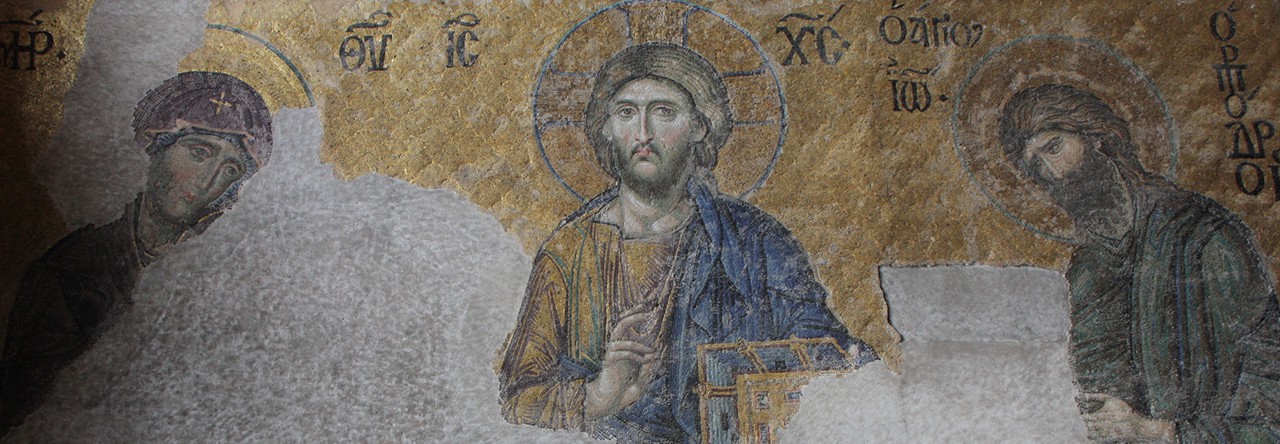







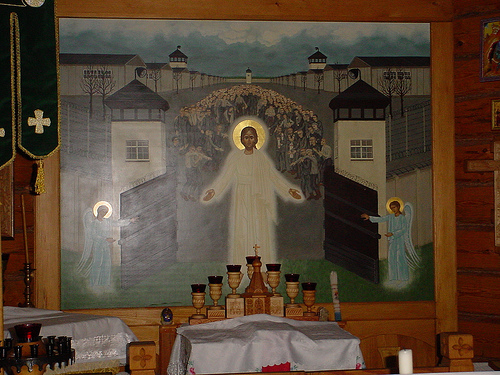

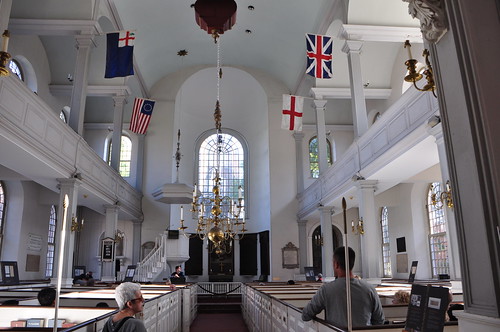

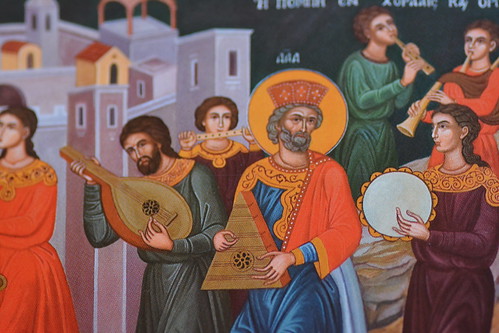













 In Romans 15:1-7, St Paul offers his understanding of how Christians should deal with disagreements within the Christian community. He offers this same teaching several times in his letters to the churches. The framework is that we are to love one another, but he is trying to apply it practically to a situation where different opinions arise on an issue. He wants to help the local community learn how to be of one mind even as there are disagreements about various practices. St Paul is not here writing about doctrinal issues but about pious practices within a community. St Paul acknowledges that some people are more tolerant of divergent practices than others. Some people are zealous, some have a strict interpretation of what is allowed, while others think pious practices are of no real significance. His solution is that when parishioners are uncomfortable with what others are doing, love requires that those who are strong in the faith have to lovingly be patient with those who are weak in the faith. The strong in faith are not those who have the greatest scruples, but rather those who are not bothered by various practices and who don’t worry if not everyone measures up to a standard. St Paul sees those who are weak in faith are much more subject to being scrupulous about every detail of the rules. But he does not comment that strong vs weak means better vs worse or right vs wrong. He recognizes only that there are divergent opinions about divergent practices and he hopes people can recognize that what is really important is that we learn to live in love for one another as Jesus commanded. St Paul writes:
In Romans 15:1-7, St Paul offers his understanding of how Christians should deal with disagreements within the Christian community. He offers this same teaching several times in his letters to the churches. The framework is that we are to love one another, but he is trying to apply it practically to a situation where different opinions arise on an issue. He wants to help the local community learn how to be of one mind even as there are disagreements about various practices. St Paul is not here writing about doctrinal issues but about pious practices within a community. St Paul acknowledges that some people are more tolerant of divergent practices than others. Some people are zealous, some have a strict interpretation of what is allowed, while others think pious practices are of no real significance. His solution is that when parishioners are uncomfortable with what others are doing, love requires that those who are strong in the faith have to lovingly be patient with those who are weak in the faith. The strong in faith are not those who have the greatest scruples, but rather those who are not bothered by various practices and who don’t worry if not everyone measures up to a standard. St Paul sees those who are weak in faith are much more subject to being scrupulous about every detail of the rules. But he does not comment that strong vs weak means better vs worse or right vs wrong. He recognizes only that there are divergent opinions about divergent practices and he hopes people can recognize that what is really important is that we learn to live in love for one another as Jesus commanded. St Paul writes:






